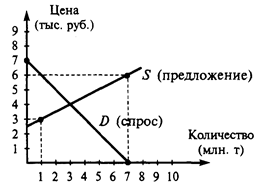AIDS and CHILDREN: COPING WITH A CALAMITY
AIDS will have a severe impact on both adult and child death rates, especially in sub-Saharan Africa, during the 1990s. The virus casts a dark shadow over prospects for major gains in children survival and development. Babies born to women infected with HIV, the virus which causes AIDS, have a 20-40% chance of contracting the virus from their mothers. Almost all of these children will die before the age of five. By the end of the 1980s, according to the World Health Organization (WHO), an estimated 3 million women world-wide, including 2.5 million in sub-Saharan Africa, were infected with HIV, and an estimated 500,000 babies had contracted the virus from their mothers. By 1992 the total number of infants born with HIV infection, in Africa alone, is expected to reach 1 million, of whom 600,000 are likely to have developed AIDS and many will already have died. Millions of children who are not infected with HIV are already suffering emotional and economic deprivation because their parents have died or are chronically ill. WHO estimates that during the 1990s more than 10 million children uninfected with HIV will be orphaned by AIDS. In many parts of sub-Saharan Africa, the extended family system, which has traditionally absorbed orphans, will come under severe strain as parents die of AIDS, leaving aged grandparents to cope with large numbers of young children. An international effort continues to be urgently needed in order to: PREVENT HIV INFECTION. The key strategy here is AIDS education through all possible channels - religious and community organisations, women’s groups, the mass media, the health services, schools and colleges, artists and entertainers. Women must also be given more say in decisions about their own health and sexual behaviour, especially by improving their incomes and education. Provide health care and social and economic support for families in which a child or a parent has HIV/AIDS and to families and communities caring for children orphaned by AIDS. The guardians of these children must be helped to provide them with a basic level of food, shelter, health care and education. Without such support, AIDS orphans will be condemned to poverty. Many will die prematurely; others will resort to crime and prostitution and will themselves be at high risk for AIDS. Although AIDS cannot be cured, many of its symptoms can be treated with low-cost, basic drugs. Sensitive counselling can help people with HIV/AIDS to live longer and enhance their quality of life through “living positively”. In countries such as Ghana, Uganda and Zambia, non-governmental organisations now provide ‘home-based care’ programmes, which are also an entry point for educating the wider community. The AIDS pandemic comes at a time when many developing nations are having to freeze or even reduce their expenditure on primary health care and social services. In most sub-Saharan countries, the health services lack the essential drugs, supplies and transport needed to provide minimum care to people with HIV/AIDS. Increased international assistance to meet these needs is urgently required. Health workers also need special training, particularly in counselling skills and in the diagnosis and treatment of infants and young children with HIV/AIDS, who may be slow to respond to standard treatments for common illnesses. The eventual scale and impact of the AIDS disaster depends on how quickly policy makers, professionals and the general public become aware of the full scale of the threat and begin taking the obvious steps to contain it.
Active words and expressions:
AIDS = Acquired Immunodeficiency Syndrome; HIV = Human Immunodeficiency Virus; WHO = World Health Organisation; to have an impact on something; major gains; deprivation; extended family system; an orphan; to cope with something; urgently; to condemn; premature; to resort to something; expenditure; a policy maker; to be aware of; to take steps; calamity; disaster; expenditure; pandemic.
|




